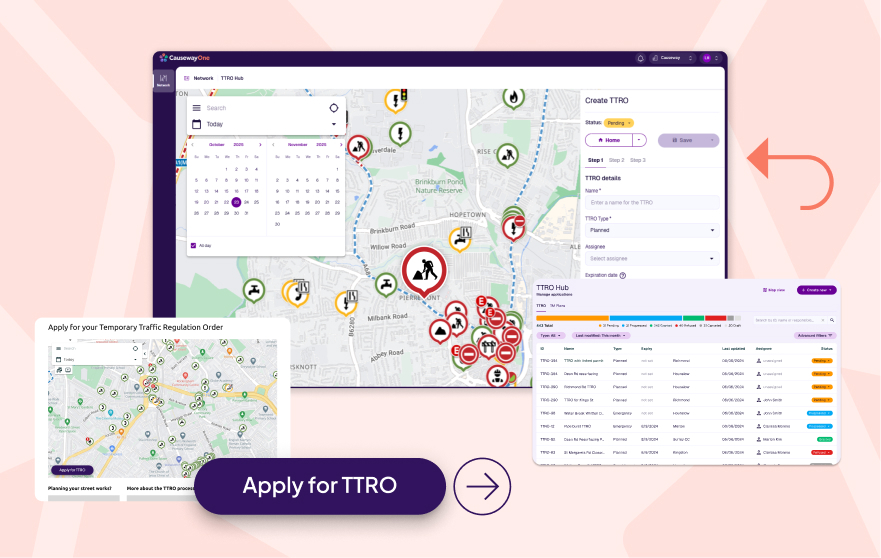It is a change that has been brewing for many years but in the past there was neither the framework of governmental guidelines and regulations in place to push the approach nor the technology that could enable more strategic plans to be put in place.
Historically, asset management tended to focus on gauging the budgetary impact of different road repair and maintenance decisions. Local authorities had to weigh up whether it made sense to save money at the outset by using a less expensive surface treatment, only to have to spend more down the line on road repairs or additional surface dressings. They had to evaluate whether using more durable but expensive materials from the word go would prove an economically-sounder decision.
The latest asset management technology builds on this capability to facilitate a much broader approach to risk management. At one level, by combining different data sets together and enabling faster and better analysis to take place, they help to eliminate the possibility of missed opportunity risk. By ensuring councils have access to, and are using, data from multiple sources, they help to enable them to build tactical and strategic plans off the back of it. Most legacy systems would not have been able to do this.
With more modern and more connected asset management systems now in place, it is possible for the much more risk-based approach, demanded by the latest industry guidelines to reach fruition. The intent of these guidelines is typically clear. The UK Roads Liaison Group’s Well-Managed Highway Infrastructure code of practice, which came into force in October 2018.stipulates: “Authorities should adopt a risk-based approach and a risk management regime for all aspects of highway maintenance policy.”
That requires authorities to focus more on enhanced lifecycle planning. That means, in turn, they need to be less prescriptive in the way they manage their assets and take in more of the socio-economic factors for decision-making, moving beyond just basing asset management decisions on empirical measurement surveys and data that arises from the asset. and concentrating instead on a more outcome-focused decision-making process.
That might include changing a road junction to reduce the number of cars idling as they wait to turn, thereby lessening the risk of damage to the local environment; evaluating the impact on road infrastructure of new school builds; or recommending the use of blacktop footways rather than block paving to reduce the risk of falls in areas with an elderly population.
The impact of technological advances
All the above outcomes are increasingly made possible by the latest asset management techniques and technologies. New predictive analytics technology is now coming on stream, allowing local authorities to base highways management and maintenance decisions on the risk they pose to local residents and the economy and environment, as well as financial cost and road condition. Thanks to these advances, authorities can move beyond a pure focus on road conditions to thinking much more about where roads are located, who is using them and what their overall risk impact might be.
The approach councils can take here starts, at the very beginning of the asset lifecycle, with design. To mitigate risk, councils may need to make decisions about where new assets may be required in terms of traffic calming schemes around neighbourhoods or schools, for instance.
In terms of asset maintenance, adopting a risk-based approach may mean prioritising pothole fixing on busy routes, considering demographics such as whether that area has a high preponderance of older people or identifying areas where there are a large number of mature trees close to the edge of the highway.
Part of it may be around better understanding how infrastructure decisions impact the quality of life in specific neighbourhoods: including projected job creation, support for economic growth, and changes in levels of access to important public resources, such as hospitals and schools.
Looking to the future
Today’s focus on risk-based highways asset management and maintenance does not represent a seismic shift away from the finance-based considerations of traditional approaches. Councils will still value that capability and many have it in place. However, the latest technology enables them to extend that capability and evaluate the risk they face in a range of areas from safety to serviceability.
In terms of mitigating environmental risk, part of the answer will come from the future capability to put a carbon value on maintenance decision-making. That will, in turn enable highways decision-makers to decide what the right balance is in terms of risk versus value versus environmental impact.
With more and more sensors embedded into plant machinery and equipment, it may in the future be possible for councils to extend risk management still further beyond pure maintenance and back to cover the construction of the road itself. The era of risk-based asset management and maintenance is already here and it is only likely to evolve and expand still further as time goes by.
Author: Andy Peart, Marketing Director, Yotta
Article first published on Safer Highways, March 2022. Click here to view the original article.



